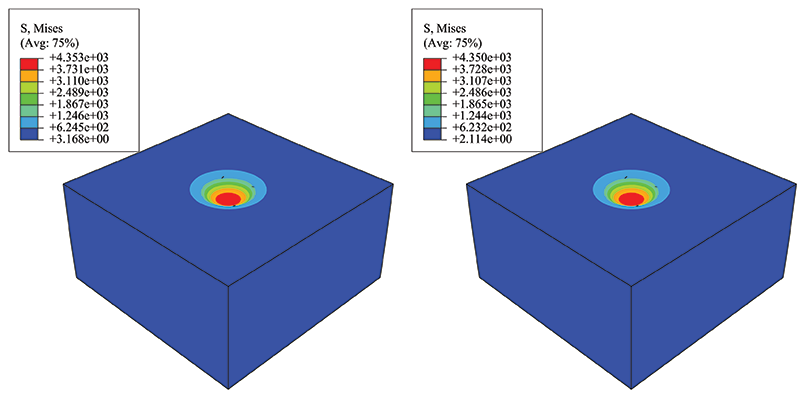Elements tested
C3D5
C3D6
C3D8
C3D8I
C3D8R
Products Abaqus/Explicit Elements testedC3D5 C3D6 C3D8 C3D8I C3D8R Problem descriptionIf a reference mesh is specified for an element, Abaqus/Explicit computes the initial stresses based on the deformation gradient that maps the reference configuration to the initial configuration. This capability is tested for different element types and materials. Some tests consist of a two-analysis sequence. In the first analysis, a regular Abaqus/Explicit simulation is performed to compute the element stresses resulting from applied loads and boundary conditions. In the second analysis, the initial mesh of the first analysis is used as the reference mesh and the final configuration of the first analysis is used as the initial mesh. This is accomplished by adjusting the user-specified nodal coordinates (see Adjusting Nodal Coordinates) using the displacement field data from the first analysis (Using an external field to define distributions and initial conditions). Results and discussionIn all cases, the initial stresses reported at the zero increment match the expected results. This verifies that the definition of a reference mesh leads to the correct initial stress conditions in each case. Several test cases use the two-analysis sequence with different element types (C3D8 and C3D8R, C3D5 and C3D6). As shown in Figure 1 (an indentation test using C3D8R elements with elastic material), the initial stresses of the second analysis (right image) computed based on the reference mesh method are very close to the the stresses in the final configuration of the first analysis (left image). Additional test cases include a test with three brick elements of different element types (C3D8, C3D8I, and C3D8R) using the same hyperelastic material and reference mesh and two tests consisting of four C3D8 or C3D8R elements each with a reference mesh of different spatial rotations. In each case, it is verified that the initial stresses computed based on the reference mesh method are correct. Input files
Figures | |||||||||||